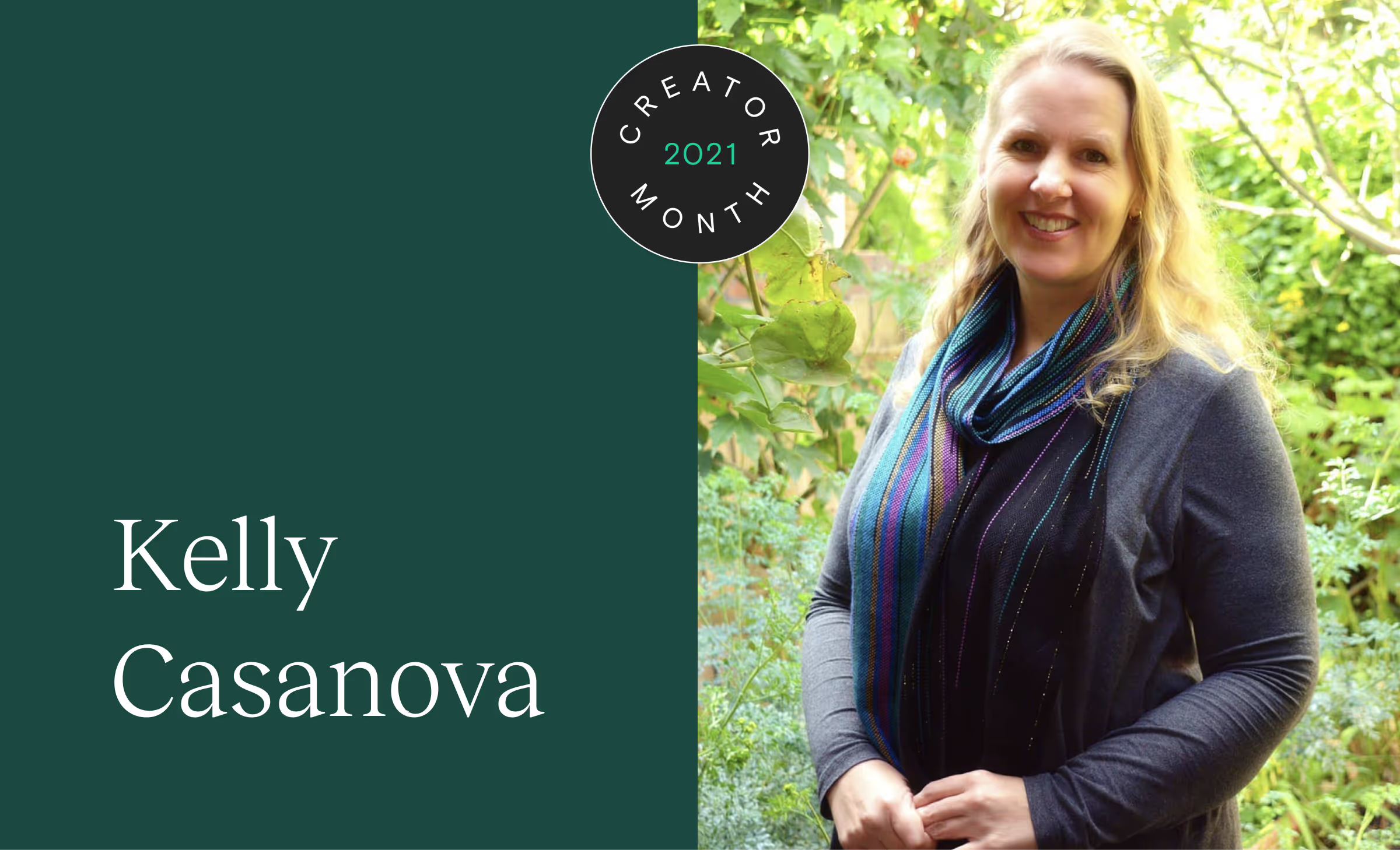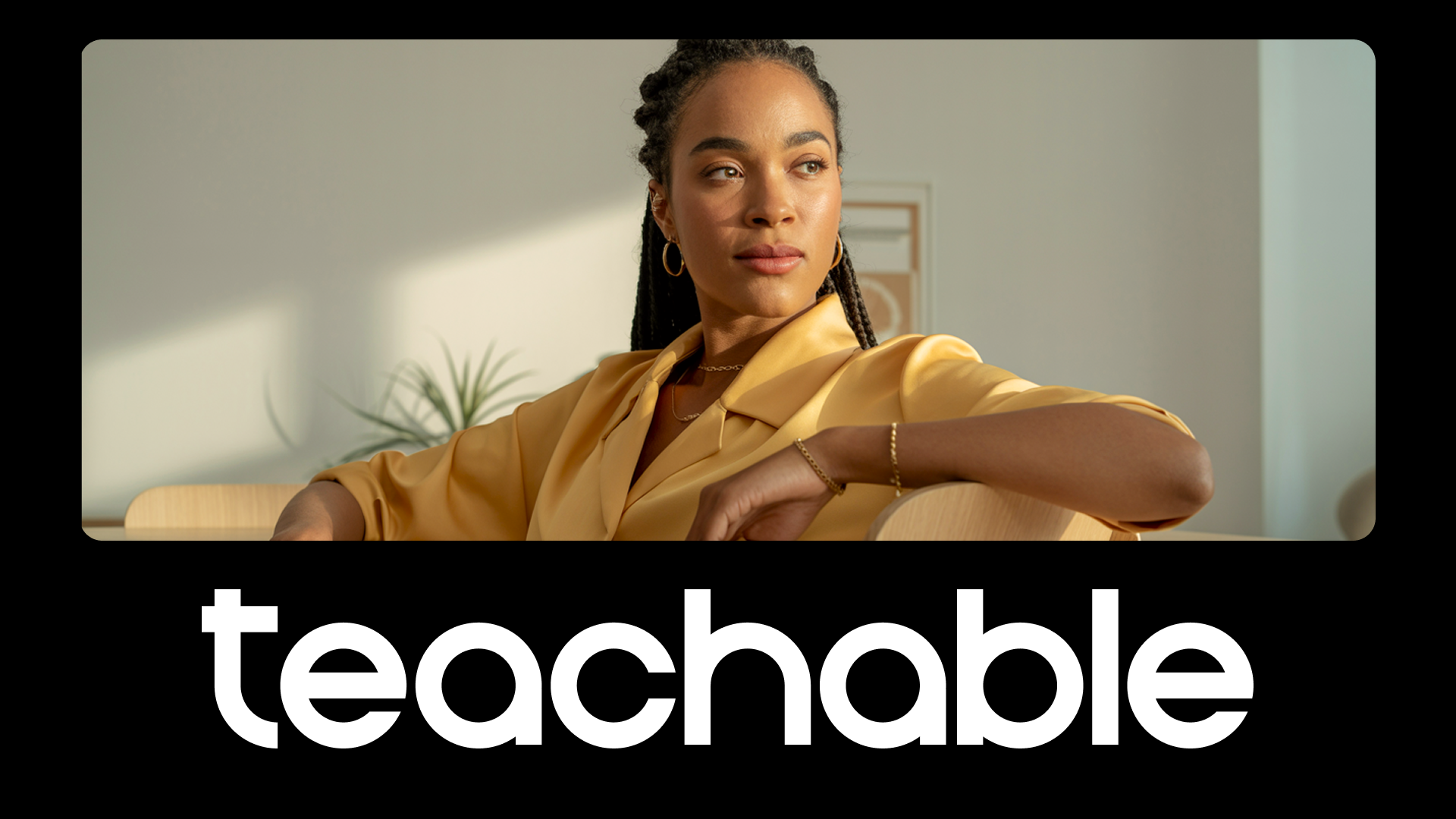The following is a guest post from Teachable creator, Kelly Casanova. Kelly is a self taught weaver with a big passion for sharing the timeless art of weaving with others through her Teachable courses. Kelly is known for her calm and slow teaching style and she bases her classes on how she would have liked to have been taught. She designs all of her own projects and caters for levels from beginner to intermediate. In honor of Teachable’s Creator Month, in which we celebrate and share the expertise of creators everywhere, Kelly shares how to use free content for success.
The concept of free content can be a bit of a stumbling block to online course creators. It seems counterproductive to spend hours, days, weeks working on projects that don’t necessarily have any immediate monetary gain. And yet I consider free content one of the key foundations to building a successful online business.
The idea of sharing what I know for free comes fairly naturally to me for a number of reasons.
- I’m passionate about my craft and just love sharing that with others
- My business started through my presence on a free platform (YouTube)
- The online weaving community is sharing and helpful
In case you’re wondering exactly how I implement free content within my online business, let me share a few examples with you.
1. Mailing list free gift
When someone signs up to my mailing list, they receive a free weaving pattern in the form of a digital download. The pattern was designed to be very attractive but not too advanced. I have a lot of absolute beginners who visit me online for inspiration and guidance, so it’s very important that they are not intimidated by a project that is beyond their level.
In conjunction with this pattern, I also made a YouTube tutorial so that anyone who downloads the pattern can also see me weaving it.
2. Timely project
Last year when the pandemic hit, so many people were stuck at home and ready to learn something they had always wanted to do. In the initial weeks, we were constantly being told to “wash your hands.” I released a free project for participants to weave some gorgeous and soft hand towels. This project was also at beginner level, as so many were taking up weaving at that time.
The PDF pattern is published and downloadable on my blog, along with a lengthy article discussing materials to use and helpful techniques. I made a two-part series on how to weave these towels from start to finish on YouTube. I also uploaded these videos plus the PDF pattern to my Teachable school as a free class and many have accessed it there.
The project became extremely popular. Over a year later, this free content is still being constantly used. I’ve received hundreds of comments from grateful weavers who appreciate that I released such detailed free content at such a difficult time.
3. YouTube videos
I was sharing videos on YouTube before I even knew what an online course was! I can honestly say that if it weren’t for my YouTube channel, I would not be running an online weaving school.
I’ve never had an uploading schedule—I just do it when I can. Most often, when I am working on filming a new class, I will use a technique or little segue to film an additional video for YouTube. This method has the benefit of not being a lot of extra work because I’m already set up and in the filming zone, and also allows me to promote the project I’m working on within the YouTube video.
By the time the new class is ready for release, I usually have a handful of YouTube videos to go along with it. More often than not, I will use the YouTube videos to construct blog posts.
{{minicourse-component="/blog-shortcodes/blog-popup"}}
How free content can work for online business
1. It allows you to build and hone essential skills
When you start out online, it’s very unlikely that you will have all the skills you need to really hit the ground running. Free content allows you to practice without heavy expectations. Any content creator who utilizes video will tell you that your first video may not be as professional as you would like. Naturally, as you practice and release more content, your skills will improve.
And because you are not charging any money for this initial content, you don’t have the pressure of higher standards.
2. It allows you to gain and test an audience
One of the most challenging things about starting out is getting people interested in what you do. Providing free content showcases what you do so that you can start building that all important mailing list. You can also test ideas to see who responds and in which way. This is really crucial in giving your business direction.
3. It allows you to build your profile by building trust
People are not likely to invest in you if they don’t trust you. And, how can people trust you if they don’t know you? The best way to build rapport is to give value from the beginning, without asking anything in return.
4. It allows you to give your audience a taster of what they can expect from you
This is crucial! My free content is constructed to show my audience my teaching style and what they can expect when they purchase a course or membership from me, but I also make it clear that the free content is more limited.
This means that when a new student arrives in my weaving school, they are there because they have accessed my free content and already like my style. Most of them are thrilled to find that the courses are beyond their expectations and provide huge value for money. My free content translates to lots of happy students!
5. It allows you to build a community around your brand
Again, I believe this is crucial. My free Facebook groups are lively, happy, inspiring, and they drive traffic to my online school. The groups help to promote my products because the group members talk about the class they’re doing and show photos. Word of mouth has been a game changer for my business! I have never done any paid advertising and my school is thriving.
Although I’ve spent all this time singing the praises of free content, I do want to point out an important fact: free content makes you money! In fact, it can make you lots of money.
How I make money from free content—based on the platform I’m using at the time
YouTube
Once you have enough subscribers, you can monetize your channel. You then start to earn revenue through ads. For most YouTubers (myself included), this is a fairly minuscule part of overall income, but it’s nice to have.
For every video I post, I make a point of talking about and linking to one of my products, usually my online weaving school. I leave a lot of links below the video to make it easy for viewers to click.
My blog
I never write a blog post without including at least one link. The link is always relevant to the post topic, so it never feels like a sales pitch. My blog also makes a small income from Google AdSense and affiliate links.
Social media
I frequently share tips, techniques, and my processes on social media. Again, these social media posts are often directed towards a particular product I have available. It’s another way of increasing interest by providing value rather than just saying “look at me!”
Free content can be the building blocks to success in so many ways. I hope my points today may help you to consider how you could make free content work for your business.
Join more than 150,000 creators who use Teachable to make a real impact and earn a real income.


.png)
.png)



